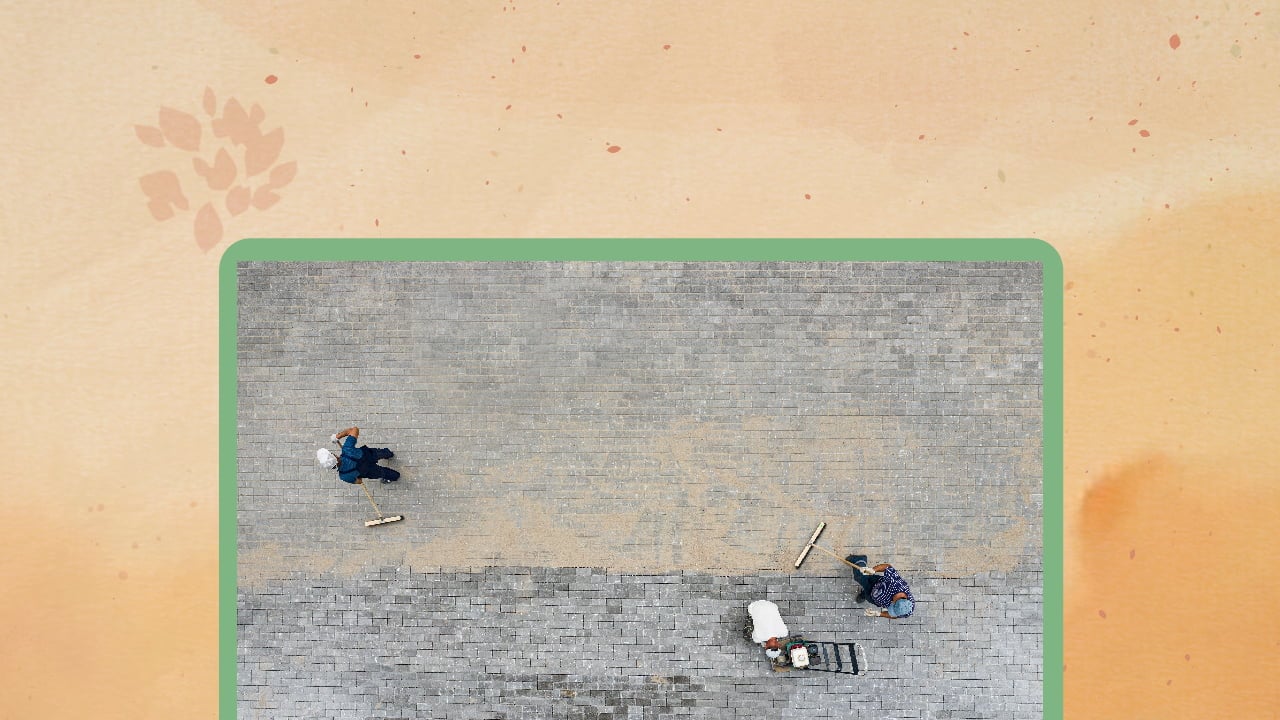Polymeric sand is an ideal option for renovators performing driveway or walkway projects. Since this compound hardens when it is in contact with water, excess sand on the pavers needs to be removed using a brush, pressure washing, or boiling water.

Although slightly expensive, polymeric sand has been a favorite among many renovators, including myself.
Though it is a great material for bonding pavers, excess polymeric sand on the paver floor can lead to an unpolished look. So, to combat this issue, I have compiled a summarized guide that helps efficiently clean any excess polymeric sand from pavers flooring.
Let's dive in.
How To Get Polymeric Sand Off After Installation?

Ideally, I recommend removing polymeric sand from pavers as soon as you finish your patio work. The polymeric sand haze that develops on top of the flooring is mainly due to the leftover material. To remove polymeric sand haze, it is necessary to know what polymer sand consists of.
Polymeric sand typically contains 85-90% crystalline silica and quartz, allowing the sand to bind together. When this sand is wet, it begins to activate polymers, which in turn toughens the numerous components and locks the pavers.
I have mentioned below the required steps required for cleaning pavers effectively:
For starters, make sure to avoid moisture or water whatsoever before cleaning. Wet polymeric sand would be much harder to get off the surface, so ensure the floor is completely dry.
On the dry paver flooring, sweep the floor with a soft-bristled broom. Keep repeating this step as many times as necessary to get rid of excess polymeric sand. I opted for a soft-bristled broom to avoid accidentally scratching or damaging the pavers.
Sweep the surface to deposit the materials into the paver joints, thus utilizing every inch. After sweeping the paver's surface thoroughly, I employ a leaf blower to get rid of any remaining polymeric sand.
Warning
Be extremely careful while using a leaf blower to avoid blowing sand in excess. If not leveled properly, it can remove polymeric sand from paver joints.
Removing Polymeric Sand Post Hardening
Unlike normal sand, polymeric sand remaining on top of the paver surface will harden quickly when it comes in contact with water or moisture. This leaves the paver stones hazy, making the surface quite tough to clean. However, cleaning the paver floor surface after the polymeric sand hardens is still possible.
Sometimes the haze on the paver will be quite thin. In such cases, I use my garden hose to wash the pavers. I did have to do the process several times to ensure I got rid of all excess polymeric sand.
But if the sand hardens into thick polymeric sand and forms rough clumps, just hose water would not be enough to get it off the paver surface.
This is when pressure washing comes into play. But a pressure washer is not to be used on a regular basis. If the excess polymeric sand cannot be removed from the top layer even after washing the surface for days, then using a pressure washer can help.
A vital thing to keep in mind when performing a pressure wash is not to let it remove polymeric sand from pavers joints. The most suitable water pressure for cleaning the pavers, without disrupting the sand from the joints, is the medium range (from 1600 to 2000 PSI).
For more efficient performance, I use a hot water pressure washer at 180℉. The heat tends to activate the polymers in the sand once again and help in removing polymeric sand from pavers effortlessly. If the area of the paver floor surface is small, I use boiling water to remove excess polymeric sand.
Precautionary Steps After Removing Polymeric Sand
After removing polymeric sand from pavers, some preventive measures will help give the paver flooring a much more polished look.
Once I remove any polymeric sand from pavers, I check for spots in the joints that may have had the sand removed. While adding material again to these joints, it is necessary to avoid adding it to a wet surface. I also keep track of the weather so I can avoid adding extra materials if there is a possible chance of rain in the coming days.
After I fill the pavers joints with polymeric sand, while keeping the precautions for cleaning in mind, I wet the sand with a garden hose to trigger it. After activation, the polymeric sand will form the alloy that effectively keeps the pavers in the right place.
Another precaution to be taken once the entire process is complete is to apply a sealer over the entire flooring. The sealer will help to attach the polymeric sand to the joints of the pavers, preventing it from being washed away by any water hose or rain, for instance.
Now, to answer a question that I get asked often - is polymeric sand waterproof?
Polymeric sand is a semi-permeable substance which means it will only allow a small amount of water or moisture to seep through. The sand gets softer when wet but remains intact and firms up as soon as it dries up again. It does not get washed away easily when it rains, but it is not immune to constant heavy rainwater run-offs.
Advantages Of Polymeric Sand
- Stops weed growth in paver joints
- Prevents erosion
- Improves the aesthetic of the floor
- It makes the floor durable

How To Get Polymeric Sand Off Pavers Conclusion
With this, we come to the end of this article. I have mentioned above all the steps needed to remove any excess polymeric sand from the pavers efficiently. However, be sure to do it with utmost care so as not to wash or blow off any required sand from the joints.
For further information, I recommend checking my article on “Polymeric sand vs regular sand.”
